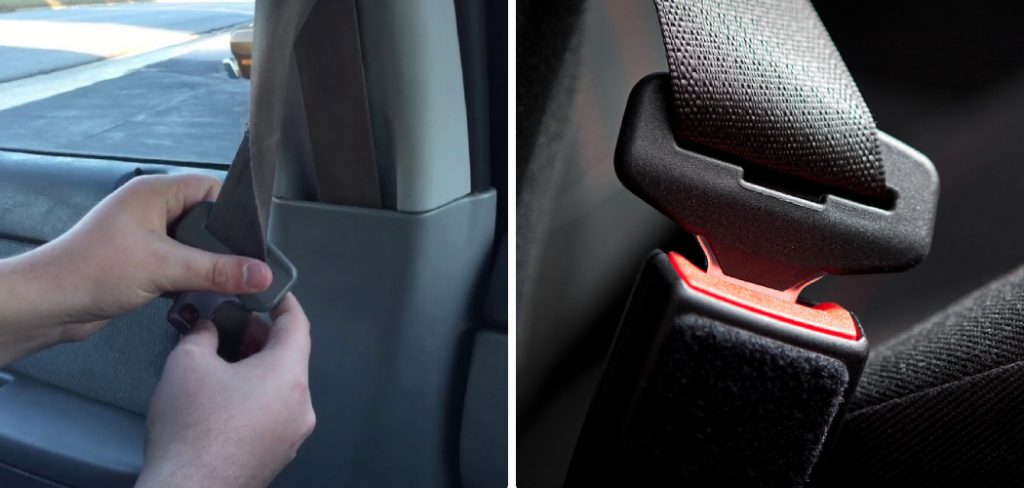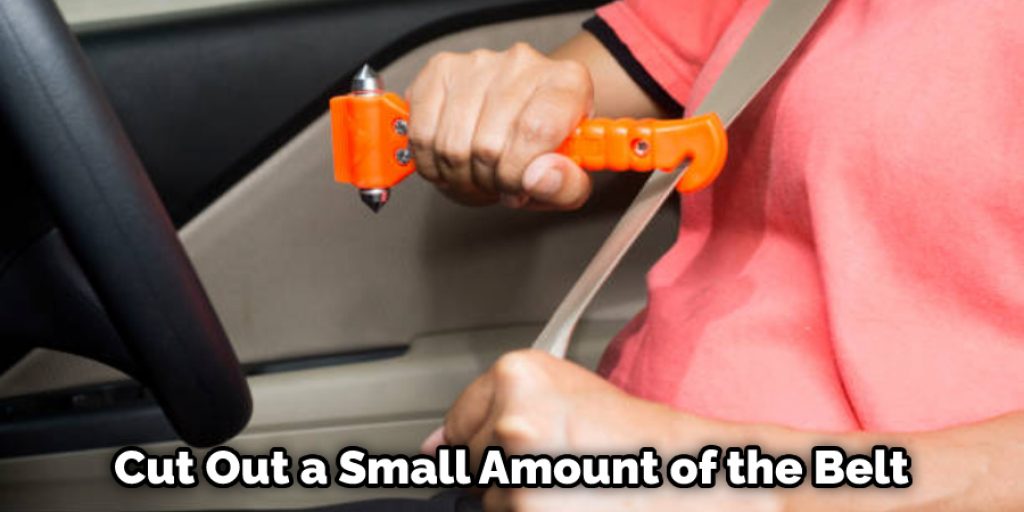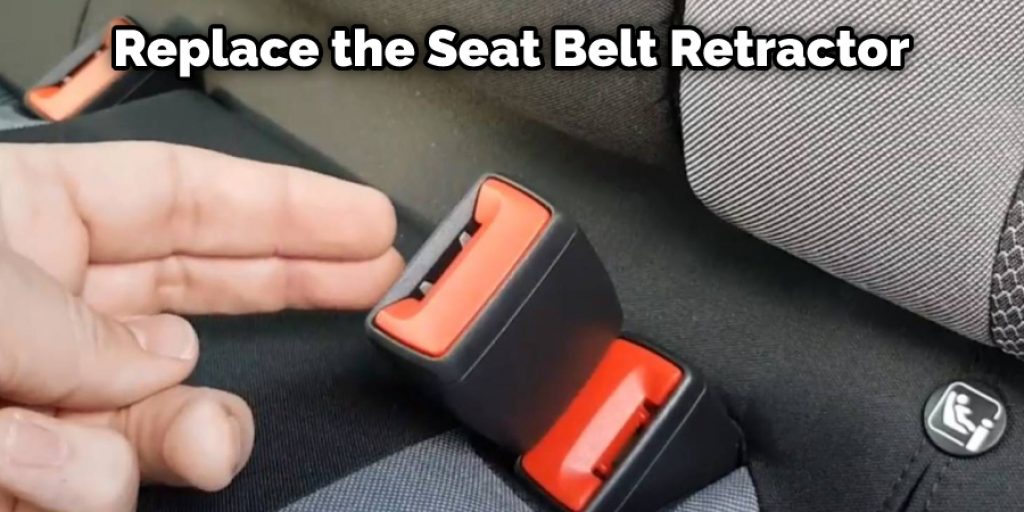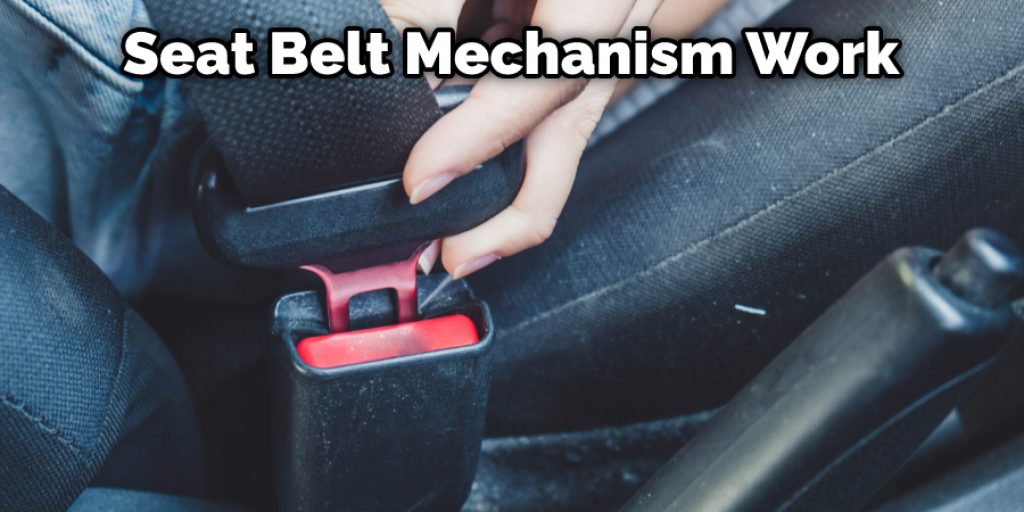Seat belts are an important safety feature in cars, and it’s crucial to make sure they’re always tightly fastened. A seat belt that’s too loose can be dangerous in a crash, so it’s essential to make sure it’s adjusted properly. If your seat belt is loose, it’s important to fix it as soon as possible.
A seat belt that isn’t properly secured can become a dangerous projectile in the event of a crash. This article will show you how to fix loose seat belts. Depending on the make and model of your vehicle, there are a few different ways to do this. Keep reading for more information.

Summary: Loose seat belts can be a dangerous hazard while driving. To fix them, the first step is to locate the buckle and anchor point of the belt. If you find damage, replace the components with new, reliable ones. Once all parts are in good condition, check that they are securely fastened and secure them if necessary. Finally, test out the belt by fully extending it – if it’s still too loose, consider replacing it with an adjustable one.
10 Ways on How to Fix Loose Seat Belt
1. Adjust the Anchor Height
If your seatbelt is too loose, one option is to adjust the anchor height back to the way it was when the car was made. This will keep the belt from touching your neck, which can cause the belt to be too loose. An adjustable clip lets you make the belt tighter or looser, depending on what you want.
2. Replace Your Seat Belt
If there is a recall on your specific car, you may need to replace the seat belt. Seat belts can wear out over time, so replacing them can be useful.
3. Tighten the Seat Belt
The third option is to tighten the seat belt, so it doesn’t work properly anymore. In an emergency, you won’t want to have a loose seat belt because of the risk of injury. To do this, you have to tighten the screw on the side of your seat, so the belt is permanently stuck in place.
4. Measure the Belt
The most effective way to fix a loose seat belt is by measuring it. You can either do this with a ruler or another object that is the same length as your seat belt. Once you have measured your seat belt, you can cut it, so it fits tightly on your neck every time you sit down. After cutting the belt, resecure it, so it doesn’t come apart.
5. Move the Buckle
If your seat belt is loose, another option is to move the buckle away from your neck. This solution is simple: all you have to do is twist the plastic holding the buckle until it’s no longer touching your neck.
6. Tighten the Belt With a Tie Wrap
This step involves cutting out part of the belt and then reapplying it to your car. To do this, you have to take apart the seat belt as if you were going to measure it.

However, instead of taking measurements, you have to cut out a small amount of the belt, leaving you with another part that can tighten the loose belt around your neck. Once you have cut out the part of the seat belt, you can resecure it with a tie wrap, so it doesn’t come apart.
7. Use a Seat Belt Tensioner
If your seat belt is too loose, you can try tightening it with a seat belt tensioner. This is a special device that you attach to the seat belt. Once it’s in place, it will apply pressure to the seat belt, keeping it snug against your neck. This option is best if you have a standard seat belt, but you will need some tools to do it.
8. Tuck the Seat Belt into Your Clothing
The final option is to tuck your seat belt under your clothing. This step works best if you have a seat belt that clips in at a certain point instead of a seat belt with a latch system. To do this, you have to make sure your seat belt is taut before you sit down.
Once the belt is taut, you have to close your door and put on a heavy coat or jacket covering the seat belt (you can pin it into safety pins). This step should be a last resort because it isn’t always convenient to tuck your seat belt under your clothing.
9. Lubricate the Plastice Loop
This step involves using a lubricant to slide the seat belt loop more smoothly against your neck. You can do this best with WD-40 or sewing machine oil, but it is important to only use lubricants that are safe for seat belts. You don’t have to do anything else after applying the lubricant to the seat belt, but it may help tighten the belt around your neck.
10. Replace the Seat Belt Retractor
The final solution is to replace the seat belt retractor because it may be faulty. You can do this best by visiting a mechanic or car dealership, and they will usually charge you a fee for this service. Once the new retractor is installed, you don’t have to do anything else, and your seat belt should work properly again.

Some Helpful Tips and Suggestions to Prevent Loose Seat Belt
- Adjust the seat belt properly.
- Do not leave heavy objects on the floor in front of your seat (such as heavy bags, books, etc.).
- Inspect for wear and tear regularly.
- Make sure that all passengers are wearing proper restraints by checking that the shoulder belt is crossing their chest and touching their shoulder and the lap belt is straight across their hip bones and does not go up over their waist.
- Inspect your seat belts regularly for wear or damage, especially any fraying or cuts on the exterior. If you see any, have them inspected by a professional as soon as possible to prevent further damage from occurring.
- Keep the area around your seat free of clutter.
- Ensure that the headrest is adjusted correctly for proper protection in an accident.
- If you have difficulty tightening your seat belt buckle, check the manufacturer’s guide to ensure it is not worn or broken. Try using a different release button if necessary to get a better grip on the belt.
Five Common Seat Belt Problems
1. Seat Belt Is Tight
Loosen the seat belt push down on the metal buckle to release all of the slack in the belt. Then pull on both ends of the seat belt to take up any remaining slack. Check again to make sure that there is no extra play in the belt after you have adjusted it.

2. Seat Belt Is Loose
If you cannot adjust the metal buckle enough to make it tight, there is a plastic clasp at your hip area used for tightening and loosening. Lift the flap and pull the end of the belt through. Then tighten it to a comfortable level.
3. Seat Belt Does Not Retract
The spring in the retractor may have broken or snapped out. If that is the case, you will need to replace your retractor by either visiting a mechanic or car dealership.
4. Seat Belt Too Long to Buckle Up
There are two or more holes on the shoulder belt guide or bracket. Loosen the seat belt by lifting up on the buckle with one hand and pulling out the strap with your other hand to allow extra length. Take up any slack in the strap by trying to pull it through the hip-clasp again. Check to make sure the buckle matches the holes in the bracket before tightening.
You Can Check It Out To Fix Clumped Down Jacket
5. Seat Belt Does Not Fit
If you cannot adjust your shoulder belt so that it fits correctly, there is a plastic clasp at your hip area used for tightening and loosening. Lift the flap and pull the end of the belt through to fit snugly against your body. Then tighten it to a comfortable level.
You Can Check It Out To Fix a Broken Seat Recliner Lever
How Does the Seat Belt Mechanism Work?
A seat belt is a safety device containing a strap made from webbing. It can be found across the chest and over the lap to secure the driver (and sometimes, even passengers). This is considered an essential part of driving because it reduces your risk of getting into an accident or sudden stop.

However, what is often overlooked with this safety feature is that it may become loose over time. This means that it can reduce your protection, but a loose seat belt could injure you.
If your seat belt is loose, it can come undone during an accident or sudden stop. Therefore, this safety device could turn into a hazard because it will not be working properly. If you want to know how to fix loose seat belt then be sure to check this full blog post.
You Can Check It Out To Fix Warped Plastic Lid
Frequently Asked Questions
Should a Seat Belt Be Loose?
While it is always important to be properly restrained in a car, there may not be a need to have your seat belt as tight as usual. In fact, some research suggests that having the seat belt lose can actually provide more safety for passengers in an accident. The reason for this has to do with airbags and how they work.
Airbag sensors rely on the pressure of the person’s chest against the sensor casing in order to deploy correctly. If you are abnormally heavy or if your body is positioned improperly relative to the airbag, then this pressure measurement won’t match up and thus won’t trigger the bag deployment mechanism.
For these reasons, many experts believe that allowing your seatbelt slack enough so that it still provides restraint but doesn’t hinder movement might be safer than using overly-tight belts altogether.
Can You Fix a Seat Belt after an Accident?
After a car accident, it is important to take the proper precautions to protect yourself and others. One of the most important things you can do is buckle up your seat belt. If you are injured in an accident, be sure not to fix or try to repair any damage done by the seat belt until a professional has evaluated the situation. This may result in further injury and could even increase your risk for future accidents.
If you have been involved in an accident that requires emergency services, please remember those following police instructions will ensure that everyone involved safety and minimizes potential injuries.
Can You Repair a Torn Seat Belt?
Yes, you can repair a torn seat belt. However, it is important to note that the repair may not be as effective as a new belt. Depending on the severity of the tear, a new belt may be necessary. To repair a torn seat belt, start by removing all of the existing hardware (buckles, straps, D-rings) from the seat belt.
Then, use a seam ripper to remove the entire seam where the belt and webbing meet. Finally, use a hot glue gun or other adhesive to attach the new webbing to the old belt using just enough glue to hold it in place while you sew it in place. Make sure to test the repaired belt before you put it in use to make sure it’s strong enough.
Why Does My Seatbelt Not Retract?
There are a few possible reasons why your seatbelt may not be retracting. The first is that the belt could be broken or stuck in the motor. If this is the case, you will need to take it to a mechanic for repairs. Depending on the severity of the issue, this may require replacing either part of the motor or all of it together.
If your seatbelt isn’t retracting because it’s stuck in any other way, then there might be something blocking its movement. This can occur if dirt or debris has gotten trapped between the belts and their pulleys, preventing them from moving properly. In order for this obstruction to be cleared away, you will likely have to remove both seats and clean everything involved before re-installing them properly.
Conclusion
If you’re having trouble with your seat belt, it’s important to know that a loose or detached retractor is the most common reason. To fix this issue, make sure that the buckle of the seatbelt clicks when closed. You may need to tighten up any connections for everything to function correctly again.
There is a little bit of maintenance on your long way to prevent future accidents caused by faulty safety equipment and keep everyone safe and secure while driving! We hope this blog post on how to fix loose seat belt has been helpful to you. If you have any questions or want to know more, then feel free to comment below!
You may also read: How to Fix a Car Subwoofer With No Sound
